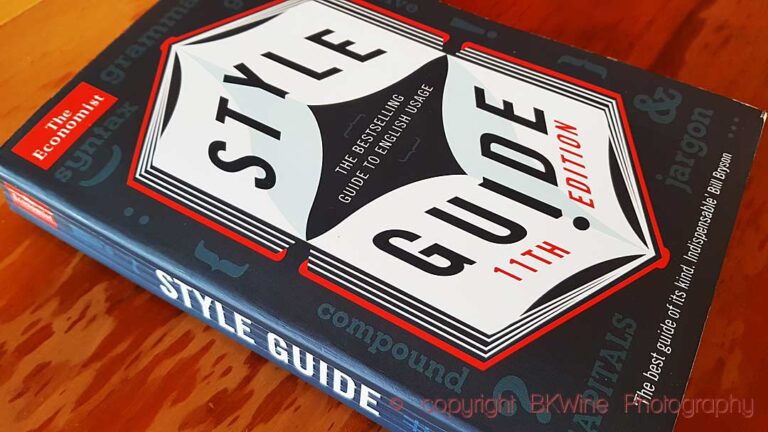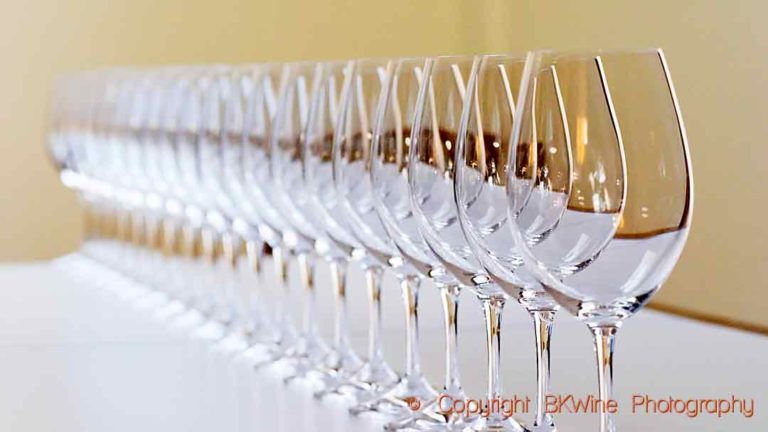
A wine can be typical or not typical. Typical of what? It can be typical of a grape, a region, a vintage, or a producer. However, most people who taste wine know that it is a fluid concept that is challenging to grasp.
(Typical is what often translates into wine-speak as typicity rather that “typicality”.)
Typicity is a bit like quality, though, if possible, even more vague. Before going into depth about the reasoning, one must define what it really means.
Someone could say that a wine is typical when it reflects its “terroir”. But it doesn’t really lead anywhere. What is terroir, concretely, translated into the taste of a wine? A wine grower could say that about his wine with some right. If someone else says it, it feels like that person makes it too easy for themselves.
You could perhaps say that “typicity” is what we think a wine “should” taste like, as we have learned it, as it is written in books (ours as well as other’s), as they teach you at wine courses. Bordeaux is austere, syrah is peppery, sauvignon blanc aromatic, etc. It sounds simple, but in fact, there are endless variations of austere, peppery and aromatic.
If we drink a wine knowing what it is, which after all is the most common, and see on the bottle that it is, say, a Bordeaux, then it is easier to evoke the expected character traits. I know, because I’ve often tasted blind, guessed wrong, and then, seeing the bottle, all of a sudden, like magic, I’ve felt the typical nose and taste. (Although Bordeaux is one of those wines that I sometimes actually get right in a blind tasting.)
The French appellations strive for a certain homogeneity, a certain typicality for their wines. The regulations specify how the wines should taste. Sometimes, there are detailed descriptions, but by necessity, they are often quite vague.
It says that a Pauillac should have tannins and be suitable for ageing, a Beaujolais easy drinking, fruity and floral and a Moulin-à-Vent powerful and complex with a spicy scent of truffle. A Gigondas should be generous but with some tannins, with ripe red berries. Neighbouring Vacqueyras complex with both red and dark berries and some dried fruit. It is vague enough for most of the wines within the appellation to fit within the framework but still leave room for each producer’s interpretations.
Sometimes, there is no typicality to fall back on. This summer we have drunk wines from grapes such as albana and pagadebit (Romagna, Italy), vranec (North Macedonia), mülller-thurgau (Czech Republic), codrinschii (Moldova), albillo mayor (white Ribera del Duero) and other oddities. You can always find some description of unusual grapes (though codrinschii was difficult as we probably drank the only wine (!) made from this grape, thank you Stefan I.). Mülller-thurgau is well-known, but mostly for being a bit boring, but then it unexpectedly appears in the Czech Republic in a very delicious and exciting guise. Typicality can sometimes become a straitjacket.
But typicality is far from obvious even for the supposedly “classic” regions. Bordeaux, with its 100,000 hectares and wines from 3 euros to 300 euros (and even 3000), what is typical? A typical chablis? Steely and tight? Yes, but the more full-bodied, are they inferior? Or even atypical? Perhaps with a bit of oxidation or “fat” from the bâtonnage of an ambitious winemaker? Champagne, with three different grape varieties in arbitrary proportions and a great variety in how the winemaker makes the wine – what is typical? (See more on this at the end of this page.)
Sometimes, a wine lacks the expected typicality. Are we disappointed if the wine does not taste as we imagined? Or is it enough that we like the wine? Maybe you can be pleasantly surprised by something unexpected? Is it possible to like a certain character trait from one region but not from another? Can one appreciate oxidised white wines if they come from the Jura or sherry but not from anywhere else? Powerful fruit bombs from California or Languedoc but not from Bordeaux? Oak ageing in a Rioja but not in a Beaujolais? Is a wine’s first task to be good or to be typical?
There are so many question marks around what “typical” really means that you become exhausted, even without 35C summer heat (like today). Striving towards typicity also leads to the concept of “stereotypical”. Do we want it? In this era when “diversity”, individuality and one’s own genuine individual character are highly valued concepts?
You realise that typical is an elusive (almost non-existent) concept when you taste many wines completely blind without having any idea what they are. For example, at the Sparkling Selection by CMB wine competition recently where I tasted around 120 different sparklings from all possible origins completely blind (out of a total of 1000 in the competition). Was it obvious what was champagne, cava, franciacorta, prosecco and so on? No, not at all. I challenge anyone who thinks it’s easy to an Olympic blind tasting!
Read more about the elusive concepts of typicity and quality, and about wine competitions in our recently published article What good are wine competitions?
Oh là, là!…
We also have to share some very fresh news that we learned today. Our latest book, “Framtidens vin” (The Wine for the Future), about sustainability, organics and other environmental issues in wine, has been awarded a very nice award in one of the world’s most prestigious wine book competitions. More on this soon as soon as we have had time to digest it and have time enough to tell you the story.
(And soon maybe another big news about our books! Keep tuned for that.)
Wine tours
If you want to join us on some really great and extraordinary adventures – once in a life-time wine tours – you can join us next winter on the extended Southern Hemisphere Tours: Chile-Argentina, South Africa and New Zealand.
We are also pre-announcing a new tour for 2025, combining Burgundy and the Rhone Valley over nine days: 17-25 September, 2025. More details coming soon.
More info on our wine tours here. “World’s Top Wine Tours“. Tours with the people who know wine and who have an unrivalled experience of wine and tours.
Travel in wine regions with someone you trust.
Wine editors to the national encyclopedia, Forbes.com contributors, award-winning wine book authors, wine tour advisors to the UN and national wine organisations, wine judges … and, above all, passionate wine travellers.
Enjoy the Brief!
Britt & Per
If you appreciate what we do, you can help us: Tell your friends about the Brief or send it to them.
Like us and follow us on social media:
BKWine Magazine on Facebook | Wine Tours on Facebook
Twitter | Instagram | Linkedin | YouTube
This is just the introduction to the latest issue of the Brief. Subscribe to the BKWine Brief and you will get the whole edition in your mailbox next month.
What’s on at BKWine Tours
BKWine is also one of the world’s leading wine tour operators. Here’s what we currently have on our scheduled wine tour program:
- Champagne, 25-29 September
- Bordeaux and Champagne, 25 Sept – 3 Oct
- Bordeaux, 29 Sep – 3 Oct
- Chile-Argentina, 13-26 January 2025
- South Africa, 14-24 February 2025
- New Zealand, 11-26 March 2025
–
- Burgundy and the Rhone Valley, 17-25 September 2025 (program coming soon)
–
We also make custom designed wine tours.
We’re different than most other wine tour operators. We are people who know wine inside out, who travel constantly in wine regions, who write award winning books about wine. Who do this out of passion. Our tours are different from others. More in wine tours: BKWineTours.com.
Champagne Jacques Selosse is one of the most respected wine producers in Champagne, located in the village called Avise. Their wines are among the most expensive wines from Champagne, often costing several hundred euros per bottle. And yet, tasted blind, his wines would rarely be recognised as champagne. They are certainly not typical for champagne. And yet, wine lovers all over the world lap them up. Literally.












